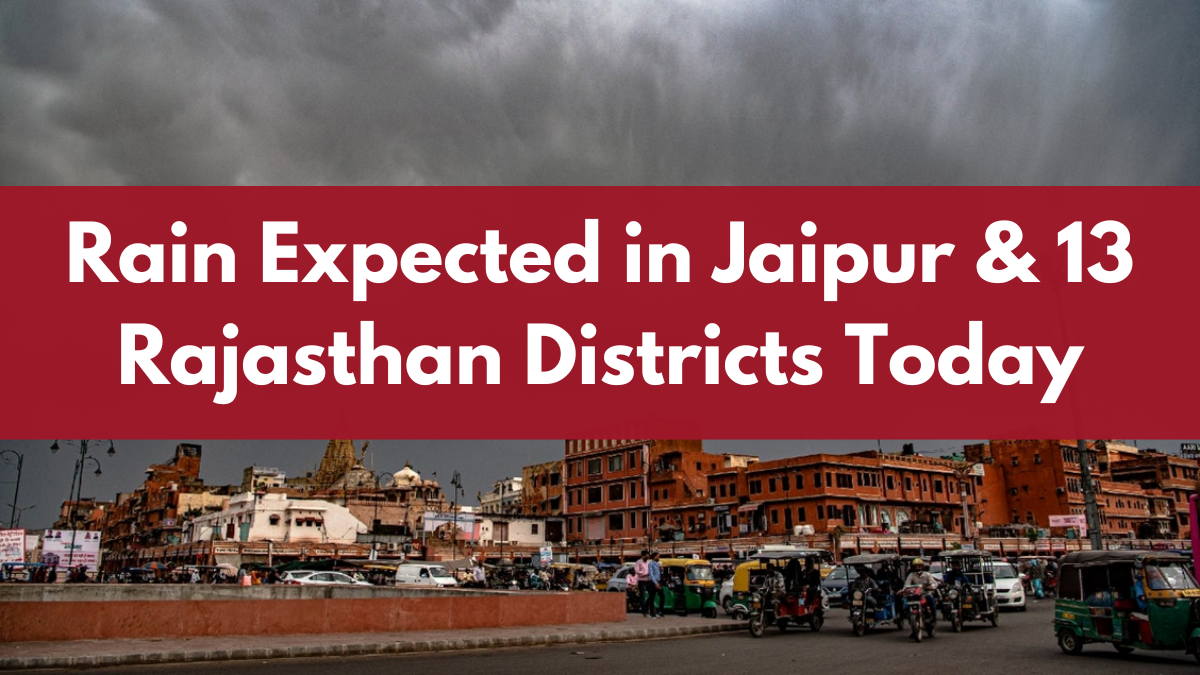Rajasthan is poised for notable weather changes commencing this evening, Monday, February 3, 2025, due to the activation of a Western Disturbance. This meteorological phenomenon is anticipated to introduce cloud cover over Jaipur and 13 districts within the Bikaner division, potentially resulting in light rain or drizzle in certain areas by late evening. The influence of this system is expected to persist into February 4, bringing continued cloudy conditions and sporadic light rainfall across the affected regions.
From February 5 onward, a resurgence of cold conditions is likely as northerly winds usher in a temperature decline throughout the state.

Recent Weather Observations
Over the past 24 hours, a decrease in daytime temperatures has been observed across numerous cities in Rajasthan, intensifying the prevailing cold conditions.
Maximum Temperatures Recorded on February 4:
| City | Maximum Temperature (°C) | Temperature Drop (°C) |
|---|---|---|
| Alwar | 21.5 | -4.7 |
| Ganganagar | 21.7 | N/A |
| Sirohi | 20.0 | N/A |
| Mount Abu | 19.4 | N/A |
| Hanumangarh | 21.3 | N/A |
| Sikar | 22.0 | N/A |
| Pilani | 23.3 | N/A |
| Churu | 23.7 | N/A |
| Fatehpur | 23.6 | N/A |
| Jaisalmer | 24.8 | N/A |
| Nagaur | 24.8 | N/A |
Chittorgarh registered the highest temperature in the state at 27.8°C, followed by Barmer (27.6°C), Dungarpur (27.5°C), and Dausa (27.2°C).
In Jaipur, the maximum temperature decreased by 1°C, settling at 25°C, accompanied by clear skies and gentle cool breezes throughout the day.
Read More: UK Households Urged to Make 3-Minute Shower Change to Save £170
Anticipated Weather for February 4
On February 4, the regions currently under the Western Disturbance’s influence can expect persistent cloudy skies with potential light showers or drizzle, particularly during the morning and afternoon hours. By February 5, weather conditions in Rajasthan are projected to improve as cold northerly winds become more prevalent. This shift is expected to cause a notable drop in temperatures, leading to colder conditions across the state.
Understanding Western Disturbances
Western Disturbances are extratropical storms originating in the Mediterranean region that bring sudden winter rain to the northwestern parts of the Indian subcontinent. They play a crucial role in the region’s winter weather patterns, contributing to precipitation and influencing temperatures.
Impact on Agriculture and Daily Life
The anticipated weather changes hold significant implications for agriculture, particularly the Rabi crops nearing harvest. Farmers are advised to monitor weather updates and take necessary precautions to protect their crops from potential rain and subsequent cold conditions. Additionally, residents should be prepared for temperature fluctuations and adjust their daily routines accordingly.
Safety Recommendations
- For Farmers: Ensure that harvested crops are stored in covered areas to prevent moisture damage. Delay irrigation and the application of fertilizers or pesticides during this period to avoid inefficacy due to rain.
- For the General Public: Dress warmly to combat the anticipated drop in temperatures. Exercise caution while driving, as wet roads and reduced visibility due to fog or rain can increase the risk of accidents. Stay updated with local weather forecasts to plan activities accordingly.
Read More: Premium Bonds February 2025 Winners Announced – £1 Million Jackpot Winners Revealed
Frequently Asked Questions
Q: What is a Western Disturbance?
A: A Western Disturbance is an extratropical storm originating in the Mediterranean region that brings sudden winter rain to the northwestern parts of the Indian subcontinent.
Q: How do Western Disturbances affect Rajasthan’s weather?
A: Western Disturbances can lead to cloud cover, light to moderate rainfall, and a drop in temperatures in Rajasthan, especially during the winter months.
Q: What precautions should farmers take during such weather conditions?
A: Farmers should protect harvested crops by storing them in covered areas, delay irrigation, and avoid applying fertilizers or pesticides during periods of rain to ensure their effectiveness.
Q: How can residents prepare for the anticipated drop in temperatures?
A: Residents are advised to dress warmly, stay updated with local weather forecasts, and exercise caution while driving due to potential wet roads and reduced visibility.
By staying informed and taking appropriate measures, both residents and farmers in Rajasthan can mitigate the challenges posed by the upcoming weather changes.
Click here to learn more
Akesh is a dedicated writer specializing in education, career, and recruitment topics, delivering clear and actionable insights to empower readers.
